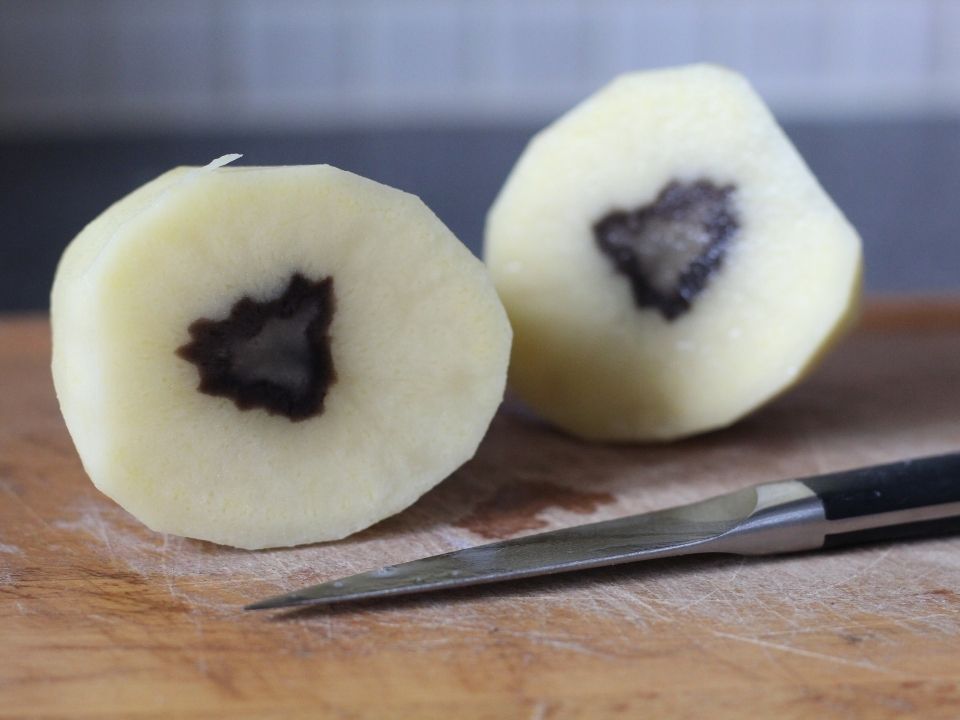Potato plants, whether in the soil a plenter or a container, need different amounts of water.
I’ll also show you how to water correctly since a lot of people don’t realize that potatoes have variable water needs depending on how wet the soil is.
Reader Poll: What online courses would interest you?
Keep reading to learn how to cultivate tasty potatoes with only a little bit of knowledge. For the full beginners guide to growing potatoes please see my full guide on learning to grow potatoes.
How Often Should You Water Your Potatoes?
Watering your potato plants at the correct times can help you receive more and better-quality potatoes during harvest.
Potatoes will be smaller and fewer in number if their plants do not get regular watering. In addition to problems such as knots, lumps, and cracks, potatoes will develop as they grow.
Subscribe to our newsletter!
Potatoes that were cultivated with the proper amount of moisture have a superior flavor and shelf life.
After potatoes are harvested, they must have their skins cured and dried before being used. Potatoes can’t cure and preserve well if their skins have cracks and knots.
Monitoring rainfall in your area, checking soil moisture levels, and understanding how much moisture potato plants need can help you determine how frequently to water your potato crops.

How Much Water That Potatoes Need To Grow?
In contrast to growing them in pots, which is becoming more popular with hobby gardeners and people with limited space, raising a quality crop of potatoes in the backyard requires different techniques.
To avoid fertilizing throughout the growing season, make sure your planting soil is well-drained and has adequate organic matter for nutrients.
When it comes to watering, there are a few things to keep in mind for different methods.
In A Garden
Good potatoes can only be grown if you keep in mind that they are a root crop that needs damp soil.
Because potatoes dislike having their “feet” wet, soaking the garden plot every day will cause them to rot and die.
If you reside in a high-rainfall location, providing well-draining soil is particularly important because of the risk of too much water getting to the roots.
It’s possible to go for extended periods without rain where I live. Rather than worry about injuring the roots, I like to mist my potatoes every two or three days with about a half-inch of water.
Decide on a method that works best for your area and stay with it.
In A Container
Potatoes grown in pots need at least one inch of water every week, and up to an additional half-inch if your soil needs it.
Growing potatoes in containers have the advantage of allowing you to immediately monitor the moisture level in the soil. When checking for water levels, you have two options: utilize an infrared or capacitive moisture meter (preferably the latter).
You should always choose a container that has enough drainage holes or at least two inches of gravel to prevent the potato roots from ever becoming saturated.
How To Water Potatoes
During the growing season, the water needs for potatoes must be adjusted significantly to ensure they get the ideal quantity of water at various stages of development.
This will boost output while also keeping the plant healthy, which reduces the risk of disease spreading.
Step One
Step one is to plant your seed potatoes in a damp but not swampy area of your yard or garden. Mulch your plants with a three-inch layer to assist keep the soil wet at this stage of the growing process.
You should attempt to wait for new leaf development (usually takes one to two weeks) before you start watering regularly if the soil is still wet enough.
Rainfall that’s not too heavy is OK at this point, but new vine growth is an indicator of root establishment since it shows that the roots are searching for moisture in the soil.
Step Two
Now that your potato plants are starting to thrive, you should adjust your watering schedule so that you are more concerned with preventing the soil from being too dry.
Start with an inch of water a week if the moisture level is enough for the smaller plants. The quantity of water you give the potatoes should rise by about an inch each week as they develop in the correct amount of sunshine.
You should examine the soil conditions every day until a pattern emerges. To prevent the soil from drying out entirely between waterings, I wash my plants every three days or so.
Until your potato vines turn yellow and die, you should keep watering them in this manner. This signifies that potato growth has ended. It’s time for the third and last step, and I’ll go through it in more detail below.
When To Stop Watering Potatoes
Knowing when to stop watering your plants is the key to getting the most out of your potato harvest, which takes us to our last segment.
Step Three
In the third level, you have a choice between two options:
- Two weeks before you want to harvest your potato crop, give yourself plenty of leeways
- Do not fertilize your potato plants.
Both of these phases call for a complete cessation of potato plant irrigation. Even while it’s possible there may be some natural rainfall, it’s not a problem at this point in the growing season.
Why?
To cure potatoes and have them ready for harvest, let the soil dry out.
It is simpler to remove potatoes with thicker skin if the soil is dry. This prevents harm to the outer layer. The shelf life of unblemished potatoes increases as potatoes are stored.
Conclusion
Water needs for potatoes are simple to follow throughout the growing season if you know what they are. Using the watering guidelines in this tutorial will help you grow a beautiful crop of potatoes that you can proudly offer all year round in delectable meals!

